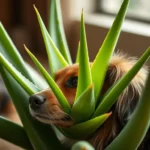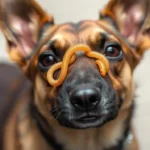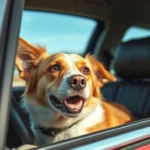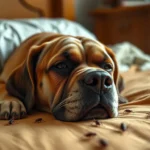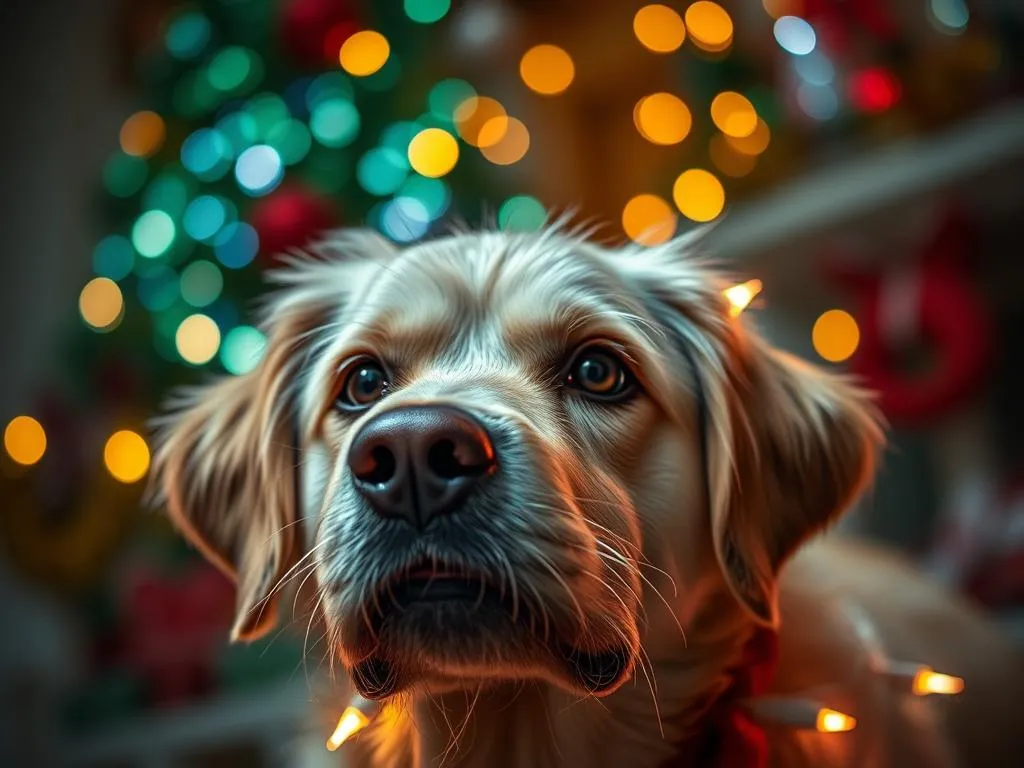
Introduction
Maintaining your dog’s health is a vital responsibility that every pet owner should take seriously. Just like humans, dogs can face a myriad of health concerns throughout their lives. These can range from common illnesses to accidental ingestions of foreign objects. This article focuses on a potentially dangerous scenario: dog ate Christmas lights.
The festive season can be a joyful time, but it also poses unique risks to our furry friends. Christmas lights, while beautiful, can be hazardous if ingested. Understanding the risks involved and knowing how to respond can save your dog’s life. Let’s delve deeper into the potential dangers of foreign object ingestion and how to keep your dog safe.
Understanding the Risks of Ingesting Foreign Objects
Common Foreign Objects Ingested by Dogs
Dogs are naturally curious creatures, often using their mouths to explore their environment. This curiosity can lead to the ingestion of various foreign objects, including:
- Toys: Small parts can be chewed off and swallowed.
- Food Wrappers: Plastic and foil can cause gastrointestinal issues.
- Household Items: Items like socks, strings, and rubber bands are common culprits.
Among these, Christmas lights present unique dangers. They consist of multiple components, including wires, bulbs, and sometimes even toxic materials. When a dog ingests Christmas lights, the consequences can be severe.
Potential Health Risks
Ingesting foreign objects like Christmas lights can lead to several health risks:
- Physical Injuries: Sharp edges from broken bulbs or wires can cause tears or blockages in the gastrointestinal tract.
- Chemical Risks: Some materials may contain toxins that can lead to poisoning.
- Behavioral Changes: Dogs may exhibit anxiety or distress if they are experiencing pain or discomfort.
Recognizing these risks is crucial for effective dog health care, particularly during the holiday season.
Signs Your Dog May Have Ingested Christmas Lights
Immediate Symptoms
If you suspect that your dog has ingested Christmas lights, watch for these immediate symptoms:
- Vomiting: This may be an attempt to expel the foreign object.
- Diarrhea: Changes in bowel movements can indicate digestive distress.
- Abdominal Pain or Bloating: Your dog may exhibit signs of discomfort, such as whining or pacing.
Long-Term Symptoms
In some cases, the symptoms may not be immediately apparent. Long-term signs to watch for include:
- Lethargy: A noticeable decrease in energy levels.
- Loss of Appetite: Refusing food can signal an underlying problem.
- Changes in Behavior: Increased irritability or withdrawal can signal distress.
When to Seek Veterinary Help
Knowing when to seek veterinary care is essential. If you observe any of the following warning signs, contact your veterinarian immediately:
- Your dog is exhibiting multiple symptoms from the list above.
- Signs of severe distress, such as excessive whining or inability to settle.
- If the ingestion occurred more than a few hours ago, as delayed responses can complicate treatment.
What to Do If Your Dog Ate Christmas Lights
Initial Steps to Take
If you suspect your dog has ingested Christmas lights, it’s essential to remain calm. Here are the initial steps you should take:
- Assess the Situation: Determine how much was eaten and the type of lights involved (e.g., LED, incandescent). This information will be critical for your vet.
- Avoid Panic: Keeping a level head will help you make informed decisions for your dog’s care.
Contacting a Veterinarian
Reaching out to a veterinarian is crucial in this situation. Here’s how to communicate effectively:
- Describe the Situation: Be clear about what your dog ate, how much, and when it happened.
- Provide Necessary Information: Include your dog’s size, age, and any symptoms that have developed.
Possible Treatments
Treatment will depend on the specific situation. Here are some common approaches:
- Inducing Vomiting: This may be recommended by your vet, but it should only be done under their guidance.
- Endoscopy or Surgery: In some cases, the ingestion of Christmas lights might require surgical intervention to remove the object.
- Follow-Up Care: After treatment, closely monitor your dog for any signs of complications or distress.
Prevention Strategies for Dog Owners
Creating a Safe Environment
Preventing accidental ingestion is the best course of action. Here are some tips to create a safe environment during the holidays:
- Dog-Proof the Home: Keep decorations, especially Christmas lights, out of reach. Consider using barriers or gates to limit access to certain areas.
- Safe Storage: Store decorations securely when not in use to prevent curious dogs from getting into them.
Training and Behavior Management
Training your dog can significantly reduce the risk of foreign object ingestion. Consider the following:
- Teaching Commands: Commands like “leave it” can be invaluable. Practicing these commands can help prevent your dog from scavenging.
- Supervision: Always supervise your dog during holiday festivities, especially if decorations are out.
Alternatives to Dangerous Decorations
If you’re concerned about the safety of traditional holiday decorations, consider pet-friendly alternatives:
- Non-toxic Decorations: Opt for decorations made from safe materials.
- Interactive Toys: Provide engaging toys to keep your dog occupied, reducing their curiosity about decorations.
General Dog Health Care Tips
Regular Veterinary Check-ups
Routine veterinary check-ups are fundamental for maintaining your dog’s health. Key areas to focus on include:
- Health Evaluations: Regular check-ups can help identify potential issues before they become serious.
- Vaccinations: Keeping vaccinations current is essential for your dog’s overall health.
Nutrition and Diet
A balanced diet is crucial for your dog’s well-being. Here are some dietary tips:
- Understanding Balance: Ensure your dog’s diet includes the right balance of protein, fats, and carbohydrates.
- Foods to Avoid: Certain foods, such as chocolate, grapes, and onions, can be toxic to dogs and should always be kept out of reach.
Exercise and Mental Stimulation
Regular exercise is vital for both physical and mental health. Here are some ideas to engage your dog:
- Physical Activity: Daily walks, playtime in the yard, and trips to the dog park can help keep your dog physically fit.
- Mental Stimulation: Puzzle toys and training exercises can provide mental challenges that keep your dog engaged and happy.
Resources for Dog Owners
Recommended Reading
Stay informed about dog health care by exploring various resources:
- Books and Articles: Look for reputable publications that focus on dog health, behavior, and nutrition.
- Online Resources: Websites dedicated to pet care often provide valuable information on various topics affecting dog owners.
Support Groups and Communities
Connecting with other dog owners can provide support and shared experiences:
- Online Forums: Join communities where pet owners discuss challenges and share advice.
- Local Resources: Look for community-based support groups for pet care, training, and health discussions.
Conclusion
Being proactive about dog health care is essential, especially during the holiday season when risks like dog ate Christmas lights become more prevalent. Understanding the potential dangers of foreign object ingestion, recognizing the signs of distress, and knowing how to respond can make all the difference in your dog’s health and well-being.
As a responsible dog owner, staying informed and prepared will help you create a safe environment for your furry friend. Prioritize their health, and enjoy a joyful holiday season together!

